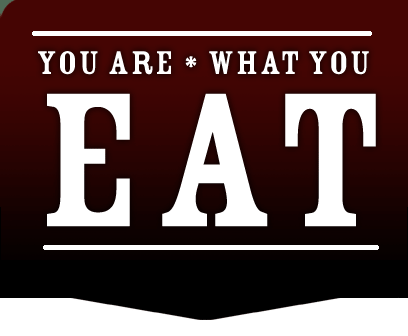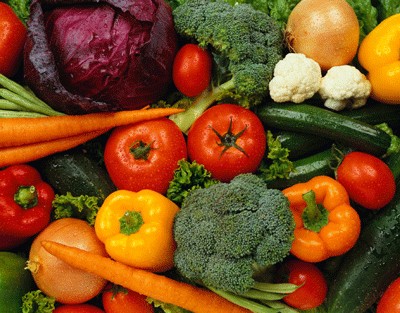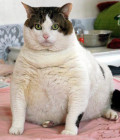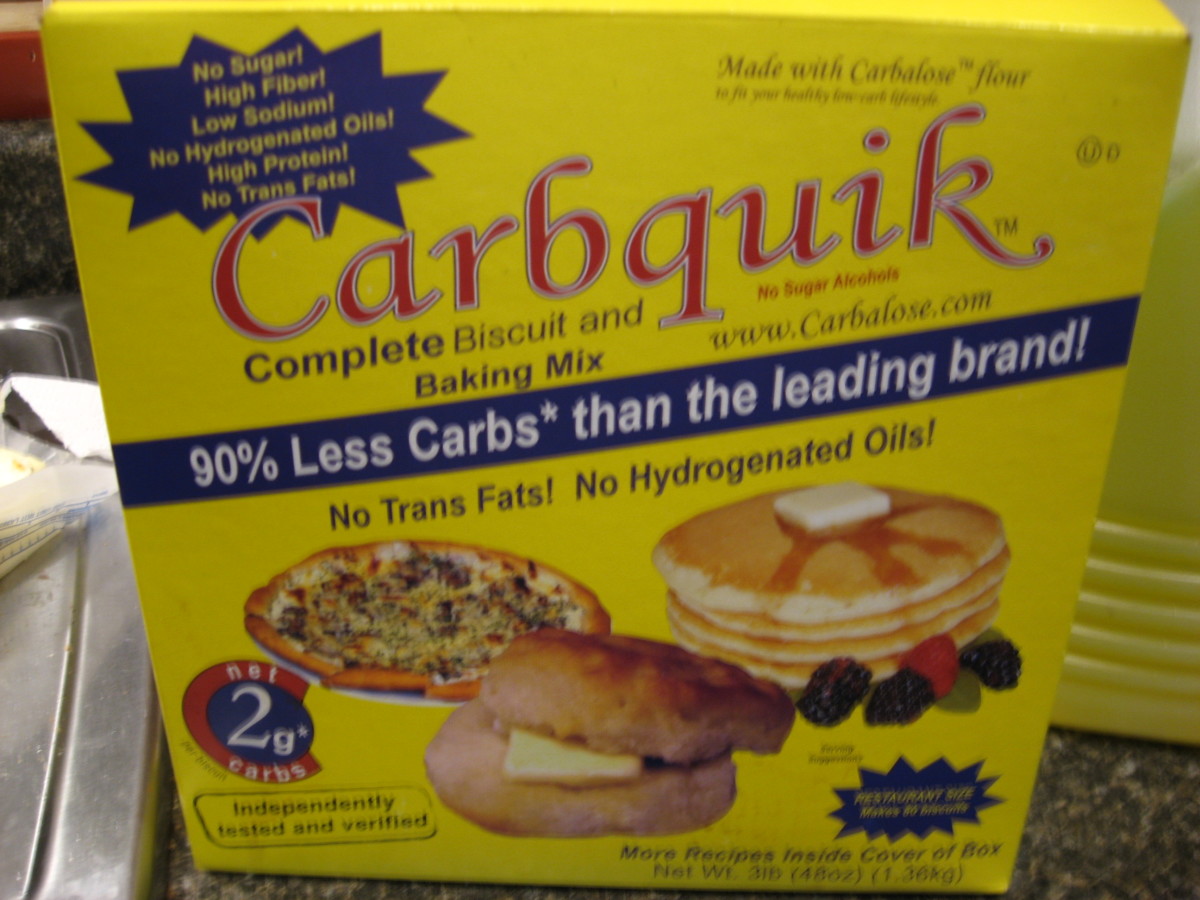Are Hormones Contributing To The Obesity Epidemic?

$30 Billion Spent on Weight Loss Yearly
It has been estimated that somewhere between 50 and 80 billion American's go on a diet each year, spending a whopping $30 billion on weight loss products and diet plans and programs. Only 5% of known dieters are able to keep the lost weight off permanently. Medical experts and professional dieticians say this is because using gimmicks doesn't teach a would be dieter how to make educated and healthy choices. They also say that in addition to eating sensibly, dieters need to incorporate an exercise program into their daily routine.
Since the early 1970s, people have been hearing about the importance of proper diet and exercise in the interest of achieving and maintaining good health. Those early years brought about the fitness craze where millions of adults took up jogging, working out to exercise videos, and joining health clubs. Diet and exercise products flooded the market. Jazzercise, Jane Fonda's Workout, and Richard Simmons became overnight sensations. American's were anxious to look better and spent $24 billion a year on vitamins, health clubs, sportswear, and diet drinks. By 1983, a Reader's Digest/Gallup poll showed that those who exercised daily had doubled from the 24% of twenty years earlier.
While medical experts were in agreement that those who exercised regularly were notably healthier than their counterparts, they were also concerned about the expanding obsession with dieting. By the mid-1980s, more than half of the American population had been on one diet or another within the previous five years. Even though Americans spent $10 billion a year on diet products and plans, only 5-10% of the dieters managed to maintain their weight loss.
The US Department of Health and Human Services reported that 80% of Americans didn't exercise enough in 1986. The 1/3 of the American population that was obese in the 70's didn't change for the better by the 1980s, where only one out of every four were within an acceptable weight range. Elementary and high school students were fatter than ever before. The obesity in our children was blamed on them spending far more time slumped in front of a television set or video game than in sports or other kinds of exercise.

68% of Adult Americans are Overweight
So, in spite of increased attention to diet and exercise, Americans continue to top the charts, leading the world in obesity rates. If dieting and exercise aren't the answer, then what? How do we stop the epidemic? How do we turn fat, unhealthy people into thinner, healthier folks who, incidentally will be happier and more productive? Why is it that some people can exercise consistently, day after day, but never drop more than an initial few pounds, only to regain them, and possibly more, within weeks or months of the loss?
As with the fitness craze, the “healthy eating craze” also had it's beginnings in the late 1960s – early 1970s. Up until the 1900s, all food grown was done so organically, simply because there was no other way to grow it. But with the introduction of chemical pesticides and growth hormones, more and more farmers adopted their use. Why? Because their use translates to cold, hard cash. Pesticides and insecticides clear the way for a higher yield in crops, bringing greater reward for cash invested. The discovery of growth hormones has revolutionized the meat industry. Farmers who utilize growth hormones in cattle, sheep, and chickens raised for human consumption, produce larger animals much more quickly than the conventional way because the maturing process takes only a few months compared to years. We purchase meat by weight, therefore an animal weighing double the normal weight will produce double the income.
There's an age old saying which states, “We are what we eat.” Does this translate into us being nothing more than fat, prematurely aged cows, chickens, and sheep? Probably, and then some. Consider the hazards of the chemicals and hormones being consumed in our food. Aside from allowing farmers to rake in extra cash for their efforts, what is it doing to our health?
Our Food Is Polluted With Toxins That Cause Weight Gain
While our doctors and government officials are lecturing Americans to lose weight, consistently blaming the obesity on folks making poor personal eating choices, what they are failing to address is the fact that our food is polluted with poisons and toxins, known to cause serious health problems and weight gain. And while there are many overweight people who certainly make terrible choices and indulge in consuming empty calories, there are just as many people who are puzzled and frustrated by their sincere efforts at weight control taking them nowhere.
Overeating and consuming empty calories isn't the only culprit, and may not even be a factor for many who are battling obesity. We Americans have been programmed to believe that being overweight or underweight is strictly a result of our ignorance and lack of control. The real truth is that we have been being fed garbage since we were children, and by the time we reach adulthood, the health and weight problems begin to surface in full force. What's really worrisome is that some of the toxins we've been fed unawares, have been passed on to the children we bore, until we are seeing obesity setting in at extremely early ages.

Additives and Preservatives Are Toxic
There is virtually nothing on our grocery store shelves that hasn't been contaminated with some kind of additive that has been shown to be harmful to humans in one way or another. These additives have been approved by the FDA even though many, if not most, studies have shown them to be harmful. What we're told is that most of these additives when eaten in small amounts, is safe. What they fail to take into account is the very real fact that every product made for consumption has been subjected to additives and preservatives. Unless we are only going to eat one small item a day, we're likely to consume an unsafe amount of the chemicals simply by eating three meals a day.
The meat industry has been feeding animal hormones to farm animals for years now. In the 1930s, it was discovered that injecting cows with material drawn from bovine (cow) pituitary glands, produced more milk. A few years later, scientists discovered the growth hormone, bGH, was responsible for the increase. At that time, the technology didn't exist for harvesting enough of the hormone to use on a large scale, but in the 1980s the use of recombinant DNA made it all possible. The FDA approved the recombinant bovine growth hormone, called rbGH and also known as bovine somatotropin (rbST) for use in dairy cattle. It is currently estimated that about 70-90% of the cows in the US are being treated with rbGH.
Increase in Obesity Matches the Increase in Hormone Use
The 1930s also introduced the use of estrogen in cattle and poultry being raised as food. By the 1950s, synthetic sex hormones (DES) were being used to increase the size of cattle and chickens. DES was found to cause cancer and was phased out in the 70's.
The FDA currently has six different kinds of steroid hormones approved for use in food production in the US. They are estradiol, progesterone, testosterone, zeranol, trenbolone acetate, and melengestrol acetate. These are female and male sex hormones, both natural and synthetic, which cause faster growth and heavier weight in cattle and sheep. When a beef cow reaches the weight of 800 pounds, it is sent to a special feed lot where the feed is loaded with growth hormones meant to fatten them up. They are also either fed or injected with antibiotics. Their weight will double in less than 90 days.
Since 1989, the European Union has banned the use of growth hormones and prohibits the importation of meat treated with them. Some other countries who have banned the use of added hormones have increased the monitoring of imported beef through testing, but American scientists and government officials insist that eating beef tainted with hormone residue is harmless to human beings.
There has been a notable increase in obesity since the 1940s, with it escalating in the last 20 years, and continuing to gain momentum. In addition to the obesity, there has been an alarming rise in cancer rates and other serious illnesses associated with the brain, nervous and endocrine system.
rbGH Treated Cows May Be Linked with Breast Cancer
While the wholesomeness of milk is reportedly not affected by rbGH treatment, there are some subtle changes taking place in the treated animal. The cells are triggered to make other chemicals called growth factors. Milk from such treated cattle have been found with slightly higher levels of insulin-dependent growth factor-1 (IGF-1). Higher levels of IGF-1 have been found in the blood of women with breast cancer than those women without cancer. It's unknown at this time if the presence of the factor is just an effect of having the cancer or if it actually plays a role in increasing the risk. Studies have shown that breast cancer cells bathed in IGF-1 grow at a much faster rate than without the factor.
Underdeveloped Countries are Experiencing Increases in Obesity
Obesity is a serious condition and we can't continue to view it as a choice being made by those with too little self-control. It isn't just an American problem. It's worldwide, at least in the nations who are also using modern agricultural and livestock raising methods, as well as those nations that import such food. The problem is growing at an alarming rate even in still developing countries where under-nutrition is a common state. In Thailand, the rate of obesity in children aged 5-12 years increased from 12.2% to 15.6% in only 5 years.
If you believe all obese people are truly just over-eaters who lounge about stuffing bonbons in their mouths all day, without bothering to move off the couch, you might want to consider this: People in underdeveloped countries do not have the luxuries that those of us in the US take for granted. Only a very few elite own vehicles. Many of these countries have very little, if any at all, public transportation. They don't own modern conveniences like washing machines, dishwashers, or even modern tractors, often relying on the centuries old method of the animal drawn plow. They don't own televisions, video games, or computers to slump in front of all day and night. Unless a building is an internationally owned hotel or business building, it's unlikely an elevator will be found within. Every function of daily living is done by hand or on foot. They should be blessed with the physiques of the Greek gods and goddesses but they aren't. They too are suffering from increasing obesity.
More From Terri Meredith
- Genetically Modified Foods and the Rise in Allergies
Do GMO's cause allergies? It's been noted by the medical profession that food allergies are on the rise at an alarming pace. The latest figures released by the CDC in 2008 claim an 18% increase between 1997 and 2007. Scientists are seeing the paralle - Biotechnology: Making Cannibalism Affordable
Biotechnology companies have spent years working to convince consumers of the benefits of genetically modified food can provide. Though they've spoken of increased crop yield and pest resistant plants, they never mentioned their intention to use spli - The Aging Factors In Our Food
Emerging studies are proving over and over again that Americans can't rely on the Federal Food and Drug Administration to protect our health from the greed of big business. There thousands of approved food additives and preservatives that have been l - Killer Coffee - brought to you by Donald Rumsfeld
How did the manufacturers of NutraSweet manage to get approval of their compound if it's as dangerous as we are told? The story is a common one where greed and financial power are blended with that of political power.
Vegetables and Fruits Have Less Nutritional Value than 50 Years Ago
Hormones in our meat isn't the only culprit responsible for the fat epidemic. A 2002 Canadian study served to confirm the findings in earlier American studies. The fruits and vegetables we're growing no longer contain the same level of nutrients to be found in them just 50 years ago. Potatoes have lost 100% of their vitamin A, 57% of their vitamin C and iron, 28% of the calcium, 50% of the riboflavin, and 18% of their thiamine. Today it would take as many as 8 oranges to consume the same amount of vitamin C found in a single orange 50 years ago. This is not a phenomenon limited only to potatoes and oranges. More than 80% of all the fruit and vegetables tested show the same alarming decline in nutrients.
When we are lacking in certain nutrients, we find that our bodies will let us know through food cravings. Ignoring them only forces your body to function without the nutrients necessary for health, which in turn will bring on illnesses. But if you eat 8 oranges, for instance, you will also be consuming 8 times the amount of sugars and carbohydrates. Cravings and hunger pangs are your body's way of alerting you to a need for replenishing fuel. Sometimes the lack of nutrients is so severe that the cravings and pangs just won't be diminished by eating that one baked potato. So what happens? We eat more until the pangs are satisfied. And we get fat or fatter.
So what can we do to help ourselves? The only answer is to eat only meat that is raised by farmers who don't use hormones, or pesticides and insecticides. Purchase meat that comes from grass-fed cows and free range chickens. Fruits and vegetables should come from growers who guarantee that chemical pesticides and insecticides are not used in the growing process. The only way to combat the loss of nutrients in fruits and vegetables may be to go back to growing your own “Heritage” breed of the plants, or expressing an interest in purchasing them at your local farmer's market.
The most important thing you can do to help yourself, as well as your children and grandchildren, is to contact your government leaders. Let them know how you feel about being fed poison. Urge them to put pressure on having more research required before allowing such chemicals to be put into our food supplies. Be relentless in passing the information to others. The only way an end can be put to the systematic poisoning of the population is for those being poisoned to take a stand.
If you find this information helpful or interesting, why not pass it on by clicking the Tweet, Like, or +1 buttons provided at the top of the page?







